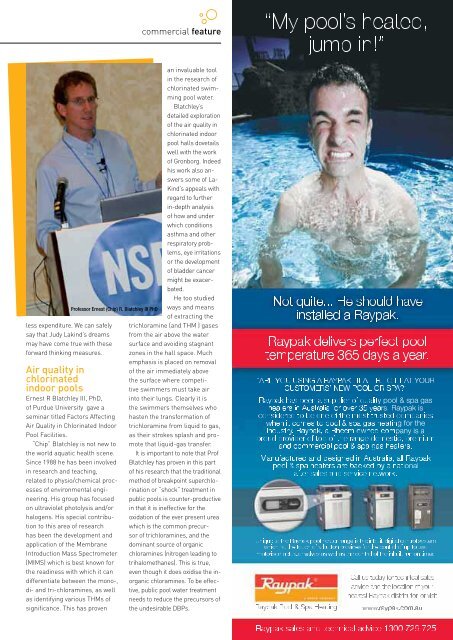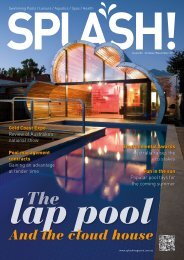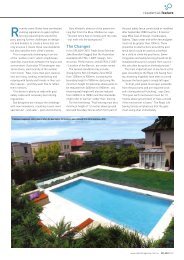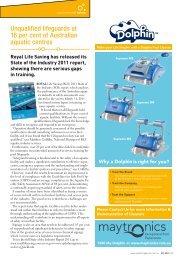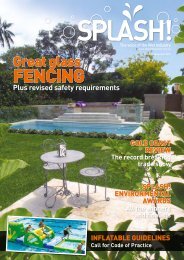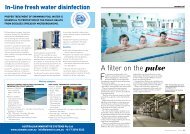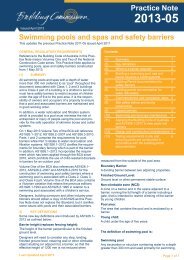Splash73p58-92 - Splash Magazine
Splash73p58-92 - Splash Magazine
Splash73p58-92 - Splash Magazine
Create successful ePaper yourself
Turn your PDF publications into a flip-book with our unique Google optimized e-Paper software.
commercial feature<br />
less expenditure. We can safely<br />
say that Judy Lakind’s dreams<br />
may have come true with these<br />
forward thinking measures.<br />
an invaluable tool<br />
in the research of<br />
chlorinated swimming<br />
pool water.<br />
Blatchley’s<br />
detailed exploration<br />
of the air quality in<br />
chlorinated indoor<br />
pool halls dovetails<br />
well with the work<br />
of Gronborg. Indeed<br />
his work also answers<br />
some of La-<br />
Kind’s appeals with<br />
regard to further<br />
in-depth analysis<br />
of how and under<br />
which conditions<br />
asthma and other<br />
respiratory problems,<br />
eye irritations<br />
or the development<br />
of bladder cancer<br />
might be exacerbated.<br />
He too studied<br />
Professor Ernest (Chip) R. Blatchley III PhD ways and means<br />
of extracting the<br />
trichloramine (and THM ) gases<br />
from the air above the water<br />
surface and avoiding stagnant<br />
zones in the hall space. Much<br />
emphasis is placed on removal<br />
of the air immediately above<br />
the surface where competitive<br />
swimmers must take air<br />
into their lungs. Clearly it is<br />
the swimmers themselves who<br />
hasten the transformation of<br />
trichloramine from liquid to gas,<br />
as their strokes splash and promote<br />
that liquid-gas transfer.<br />
It is important to note that Prof<br />
Blatchley has proven in this part<br />
of his research that the traditional<br />
method of breakpoint superchlorination<br />
or “shock” treatment in<br />
public pools is counter-productive<br />
in that it is ineffective for the<br />
oxidation of the ever present urea<br />
which is the common precursor<br />
of trichloramines, and the<br />
dominant source of organic<br />
chloramines (nitrogen leading to<br />
trihalomethanes). This is true,<br />
even though it does oxidise the inorganic<br />
chloramines. To be effective,<br />
public pool water treatment<br />
needs to reduce the precursors of<br />
the undesirable DBPs.<br />
Air quality in<br />
chlorinated<br />
indoor pools<br />
Ernest R Blatchley III, PhD,<br />
of Purdue University gave a<br />
seminar titled Factors Affecting<br />
Air Quality in Chlorinated Indoor<br />
Pool Facilities.<br />
“Chip” Blatchley is not new to<br />
the world aquatic health scene.<br />
Since 1988 he has been involved<br />
in research and teaching,<br />
related to physio/chemical processes<br />
of environmental engineering.<br />
His group has focused<br />
on ultraviolet photolysis and/or<br />
halogens. His special contribution<br />
to this area of research<br />
has been the development and<br />
application of the Membrane<br />
Introduction Mass Spectrometer<br />
(MIMS) which is best known for<br />
the readiness with which it can<br />
differentiate between the mono-,<br />
di- and tri-chloramines, as well<br />
as identifying various THMs of<br />
significance. This has proven


